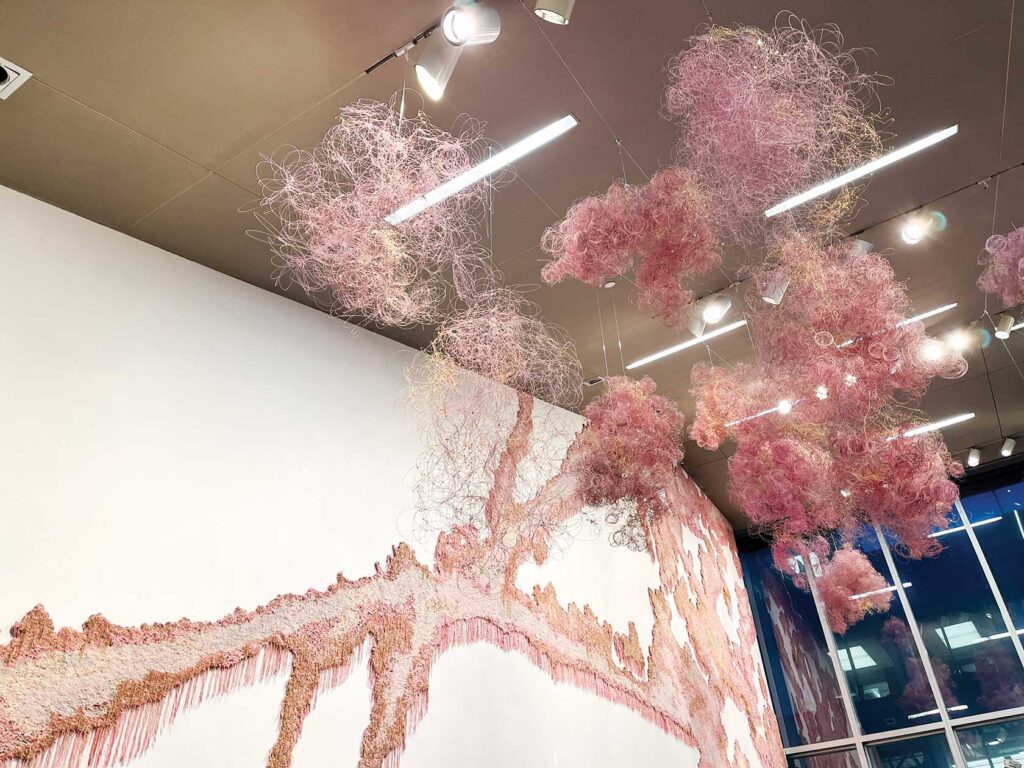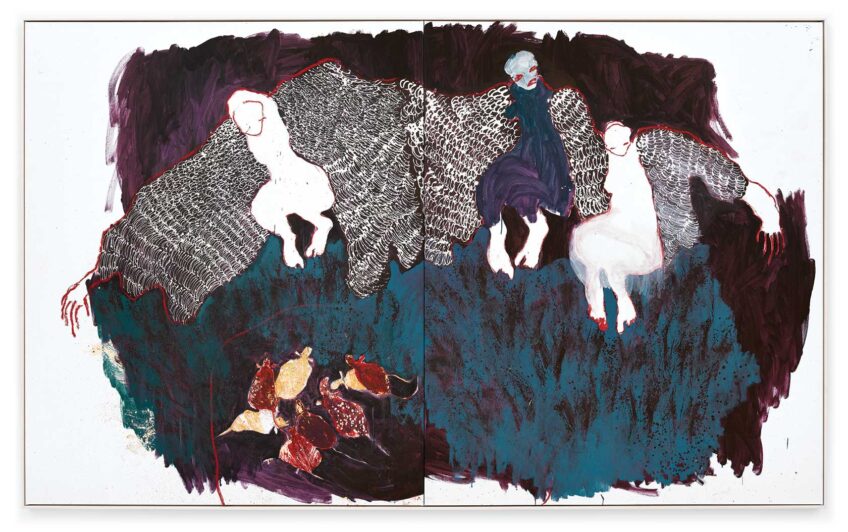Igshaan Adams weaves pathways through his memories of apartheid
South African artist creates large-scale textile work for ICA

“Lynloop,” an intricate pink weaving by South African artist Igshaan Adams, is the first thing visitors see at the Institute of Contemporary Art in the Seaport. Commissioned specifically for the Sandra and Gerald Fineberg Art Wall at the museum’s entrance, the sprawling textile work explores community histories, familial ties and spirituality in Adams’ heritage.
The weaving, which is a dense hand-woven mixture of pink mohair, cotton thread, beads and rose-gold chain, gives the impression of a map stretching across this massive wall. Adams was inspired by what urban planners call “desire lines,” the intuitive human-made paths that veer off designated sidewalks. “Lynloop” maps the desire lines between sports fields and recreation areas that Adams frequented as a child in South Africa.
“He was really taken with this idea of returning to a place from his childhood, a place which he had kind of conflicted memories about because of the ways in which that space was sort of policed, and especially associated with ideas of masculinity,” says Ruth Erickson, the museum’s Barbara Lee chief curator and director of curatorial affairs, who organized the installation.
Adams’ map, given an element of fantasy with its pink and sparkling materials, ruminates on the impact childhood experiences can have on one’s future. It also showcases desire lines as a kind of transgression, particularly against the rigid governmental boundaries of the apartheid era that were designed to keep different racial groups separate.
The artist described the work as “a yearning for the beauty and fantasy of what could have been if my environment had allowed for it — forcing a wish onto a memory.” The warm colors and soft material of the installation bring comfort to the cold memories of this era.
This installation also marks the first time artwork in this space has come off the wall. A series of hanging pink wire sculptures throughout the ICA’s lobby are inspired by the dust that’s kicked up when walking along these desire lines.
“Lynloop” is on view at the ICA through Feb. 15, 2025. The installation is in the lobby of the museum, which is free for all to access, and the rest of the museum is also free to visitors from 5-9 p.m. every Thursday.
Though Adams’ work is deeply personal, the themes of pathways and change are extremely relevant to the Seaport neighborhood outside the museum window, where a massive contemporary neighborhood has risen from a series of derelict parking lots in barely a decade. Boston continues to grapple with how the neighborhood fits into the city, and its accessibility in terms of both price and public transit service is an ongoing issue.
Erickson says, “I think this project can connect with a more expanded and universal kind of aesthetic experience of beauty, and the way that we can all connect with walking along pathways — and making our own pathways.”








